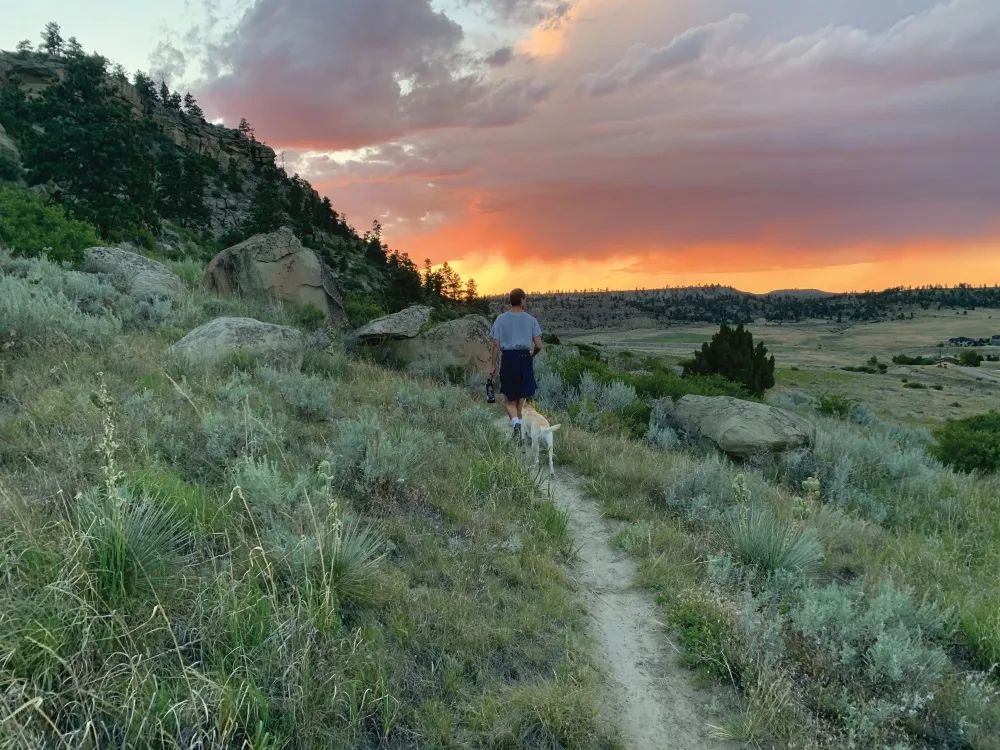
Wide Open Spaces: Billings City Limits
January 2022
by anna rogers | Photos by Steve McConnell, City Forester and Natural Resources Program Director at City of Billings, MT
“When we dance the earth trembles. When our steps fall on the earth we feel the shudder of life beneath us, and the earth feels the beating of our hearts, and we become one with the earth. We shall not sever ourselves from the earth. We must chant our being, and we must dance in time with the rhythms of the earth. We must keep the earth.”
- N. Scott Momaday, Earth Keeper: Reflections on the American Land
There is a beckoning in the waving of the grasses as the wind blows across the high plains – a whisper in the snowflakes as they fall, calling us to come and see and think and play. The muddy flow of the spring river tells of winter and promises summer. The Rimrocks stand as sentinels, guarding the north, and birds of all shapes and sizes remind us of the life all around. The streets may be bustling, but somewhere close by, there is open stillness. This is Billings.
What We’ve Got
The city of Billings is home to 149,316,811 square feet of green space. Within this square footage are 43 city parks managed as "Natural Areas." Billings' natural areas include open space, high desert habitat, wetland or streamside areas, grassland areas, and undeveloped urban land.
“Our basic credo is that Natural Areas are special portions of open, undeveloped land that can provide beauty and comfort to the community,” says Steve McConnell, City Forester and Natural Resources Program Director for Billings. “They tell us about the history of the land and region, its landscape, geology, and people. Like developed parks, natural areas can be for people and provide many things – a place to sit, walk, watch, or listen to wildlife – a place to study and observe all forms of life and their interactions. Natural areas can provide a home to pollinators such as bees and butterflies, wildflowers, and native shrubs and trees. Our goal is to continue to nurture natural areas and adaptively manage them as well-balanced, sustainable, natural ecosystems… as well as to reintroduce natural areas and people’s experience of them into the Billings community.”
For Billings’ residents, experiencing green space and natural areas is almost always a short walk away.
Neil Kiner, Landscape Architect and owner of Second Nature Consulting, has been working with a committee to apply for LEED for Cities certification. Billings was one of 15 cities selected in 2021 for the LEED for Cities program.
In completing the Ecosystem Assessment portion of the application, some statistics really jumped out at Neil. “Billings has an incredibly equitable distribution of public open and green spaces,” he says. “In fact, over 99% of all residences, including apartments, in Billings are within ½ mile of a trail, park, or other open/green space.” LEED for Cities requires just 70%.
Billings also boasts 1,359 square feet of green space per resident, again topping the LEED requirement of 861 square feet per person.
Why It Matters
“There have been many studies documenting the effects of green spaces on human psyche and mental health,” Kiner says. “Access to, and immersion in, nature and green spaces have repeatedly shown positive effects on physical and mental health. Open spaces are an important component in maintaining a healthy community.”
Intuitively, we all know this to be true. We’ve likely all experienced an improvement in mood (and the moods of our children) after a jaunt outdoors. At some point, we’ve probably all sat and just observed, listened, and found clarity and peace. But what if there’s even more to it than that?
Lisa Nisbet, Ph.D., is a psychologist at Trent University in Ontario, Canada, who studies connectedness to nature. She says that stress reduction and attention restoration (or the restoration of one's cognitive resources) are related. Due to the societal problem of stress experienced today, researchers are pouring a lot of time into studying these topics, including attention restoration theory.
Attention restoration theory asserts that nature is enjoyable and generally beneficial and helps improve our focus and address mental fatigue by replenishing our cognitive capacity. The theory is that exposure to natural environments encourages more effortless brain function, which gives our minds the needed headspace to recover.
On top of this, access to natural space is linked to a lower risk of mental illness. In Denmark, a study utilized satellite data of children's exposure to green space from birth to age 10 for 900,000 residents born from 1985 to 2003. The study found that children who lived in neighborhoods with more green space had a reduced risk of psychiatric disorders later in life, including depression, mood disorder, schizophrenia, eating disorders, and substance abuse.
The research linking exposure to natural areas with physical, mental, and emotional well-being has exploded in recent years, all while access to these spaces is dwindling. There are plenty of people working together in Billings to make sure healthy access doesn’t go away.
Who’s Making It Happen?
The LEED for Cities application process is simply shining a light on the community's work over many years. Organizations like Yellowstone River Parks Association (YRPA), Yellowstone Valley Audubon Society, Billings TrailNet, Billings Parks and Recreation, and many more amazing groups and individuals have held a sustained passion and work ethic for maintaining wide open spaces for our city. We’ll dive into each of these groups more in this multi-part series, so stay tuned for next month’s issue!
Originally printed in the January 2022 issue of Simply Local Magazine
Never miss an issue, check out SLM's digital editions here!





